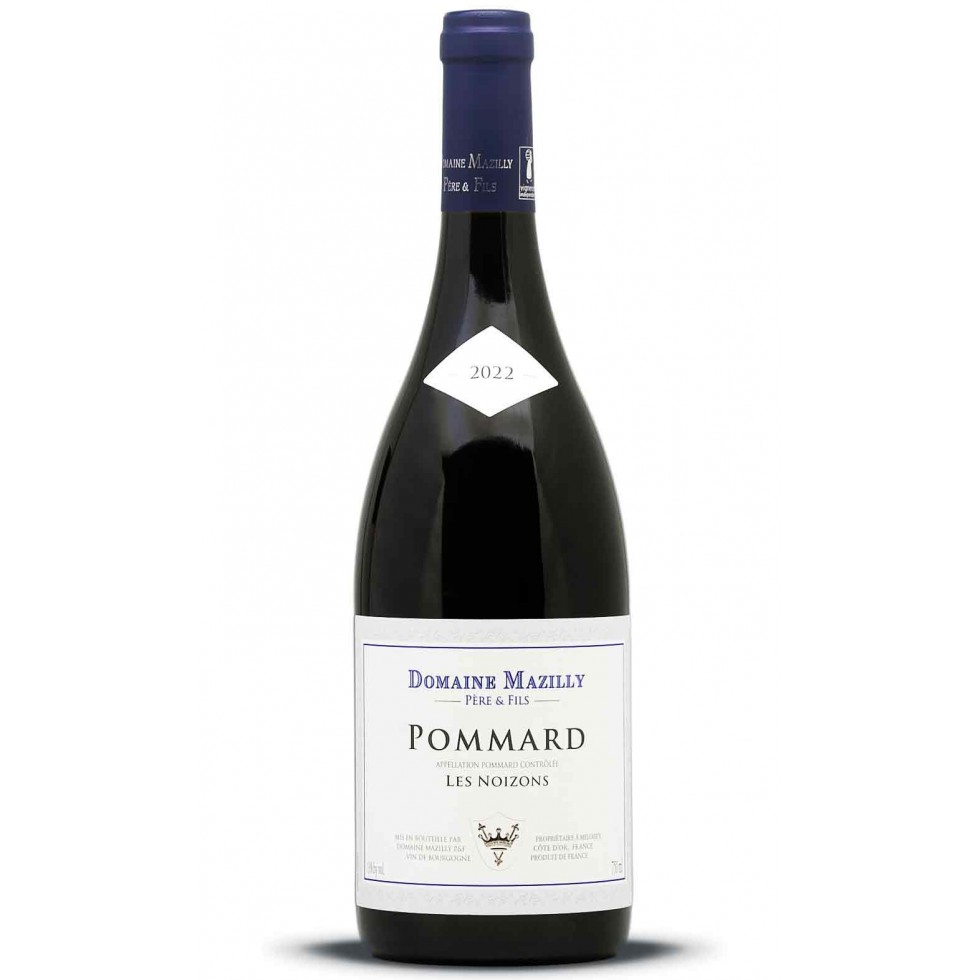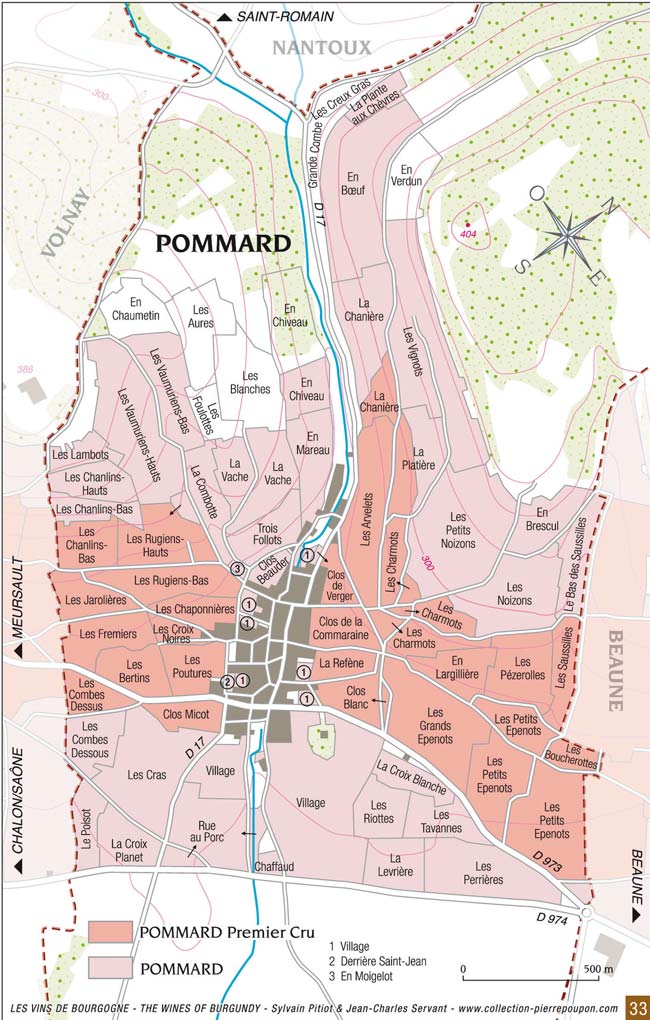
Pommard 2022 "Les Noizons"
- Red
- 75 cl
Pommard "Les Noizons" from a 2022 vintage reputed to be of very high quality.
Rich but unctuous, powerful and intense, it offers all the characteristics of this great red wine from Burgundy.


Pommard "Les Noizons" from a 2022 vintage reputed to be of very high quality.
Rich but unctuous, powerful and intense, it offers all the characteristics of this great red wine from Burgundy.
Pommard 2022 "Les Noizons"
Complex
Powerful
Mineral
Fruity
Woody
With a garnet colour, this powerful and tannic but also refined wine is very representative of Pommard, one of the most beautiful red wine appellations of the Côte de Beaune in Burgundy.
From the 2022 vintage, it offers power, richness and aromatic intensity.
With aromas of red and black fruits, this Pommard brings a complexity worthy of the greatest red wines of Burgundy. Its aromas may evolve towards more animal notes as it ages (leather, game).
Round and opulent, long in the mouth, it is very representative of the wines of the appellation: structured and powerful, it can be accompanied by a very wide range of dishes, grilled meats or meats in sauce in particular, but also game with hair.
Map of the vineyards of the Pommard appellation:

Red wine of tannic Burgundy - Corsé: grilled or roasted pork, steaks or ribs of beef, cobblestones and beef steaks, braised beef in sauce, furry game, couscous and tagines, Epoisse
Appellation
VillageType of Wine
StillWine Making
Oak casksGrape Variety
Pinot NoirHarvest
ManualBurgundy Region
Côte de BeauneVintage
2022Service
14 to 16 degreesCustody potential
2027Degree of alcohol
13°
Beware of preconceived notions! The fame of Pommard in the 19th century earned it the image of a wine that is both forceful and virile. In reality, time, terroir and methods of vinification have all combined to create a more subtle reality, a wine that is both richer and more sensitive. Its colour is the deep, dark red with mauve highlights which caused Victor Hugo to speak of it as “night in combat with day”. Its aromas are redolent of blackberry, bilberry, or gooseberry, cherry pit and ripe plum. Often, wild and feline notes develop with age. At full maturity, it tends towards leather, chocolate and pepper.
It needs to be given time to open up to its fullest extent and to display its mouth-filling texture, its firm but delicate structure, its fruit-filled mouth, and its chewy tannins, which by then will be properly smoothed down. A “rich” wine ? Certainly.
This illustrious representative of the Côte de Beaune with its dense and massive tannins revels in furred or feathered game, braised or roasted, which will find in Pommard (and especially in the Premiers Crus) an invaluable collaborator. Thick cut beefsteak, lamb, or stewed poultry will respond to its firm-textured tannins and concentrated aromas. It is a natural partner for cheeses with well-developed flavours: Époisses, Langres and Soumaintrain, but also Comté.
Serving temperature: 14 to 16°C.
For centuries Pommard has been considered the typical Bourgogne: deep red in colour, powerfully aromatic, solid and trustworthy. The very name Pommard has a generous ring to it and fills the mouth as it fills the glass. Pommard with its smiling vineyards lies between Beaune and Volnay where the Côte de
Beaune makes a slight turn towards Autun. These lands formerly belonged to the Dukes of Bourgogne, to religious houses including the abbey of Cîteaux, or to old families such as the Marey-Monge family. As early as the Middle Ages, Pommard was thought of as the flower of Bourgogne wines - the wine to which all others were compared. The appellation, one of the first AOC to be so designated (1936), grows only red wines from the Pinot Noir grape.
On the lower ground the soil is ancient alluvium. Mid-slope, the clay-limestone soils are well drained thanks to the inclusion of rock debris. Higher still are Jurassic (Oxfordian) marls, brown calcic soils, and brown limestone soils. In places, the soil is reddened by the presence of iron. Exposure: south or east.
Altitudes: 250 to 330 metres.
Source : https://www.bourgogne-wines.com
Burgundy has been the cradle of the Mazilly family for several generations.
In the early 1950s, Pierre Mazilly succeeded his grandfather. His son Frédéric and grandson Aymeric have taken up the torch and continue the family tradition. The Mazilly family takes care of all stages of production itself, from the work in the vineyard to bottling, in order to always offer high quality wines.
The premises are located in Meloisey, a small village in the Hautes-Côtes de Beaune region with a winemaking tradition for centuries, and it is even said that Meloisey wine was served at the coronation of Philippe-Auguste in 1179.
Since 2001, most of the wines have been aged and aged in the cellars located in Meursault.The estate's vineyards, 18 hectares in total, are mainly located in the Hautes Côtes de Beaune, but also in renowned appellations such as Gevrey-Chambertin, Pommard, Volnay or Meursault...
